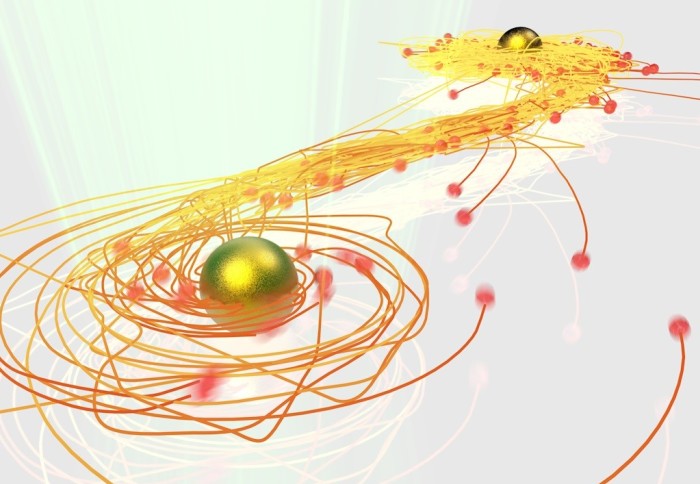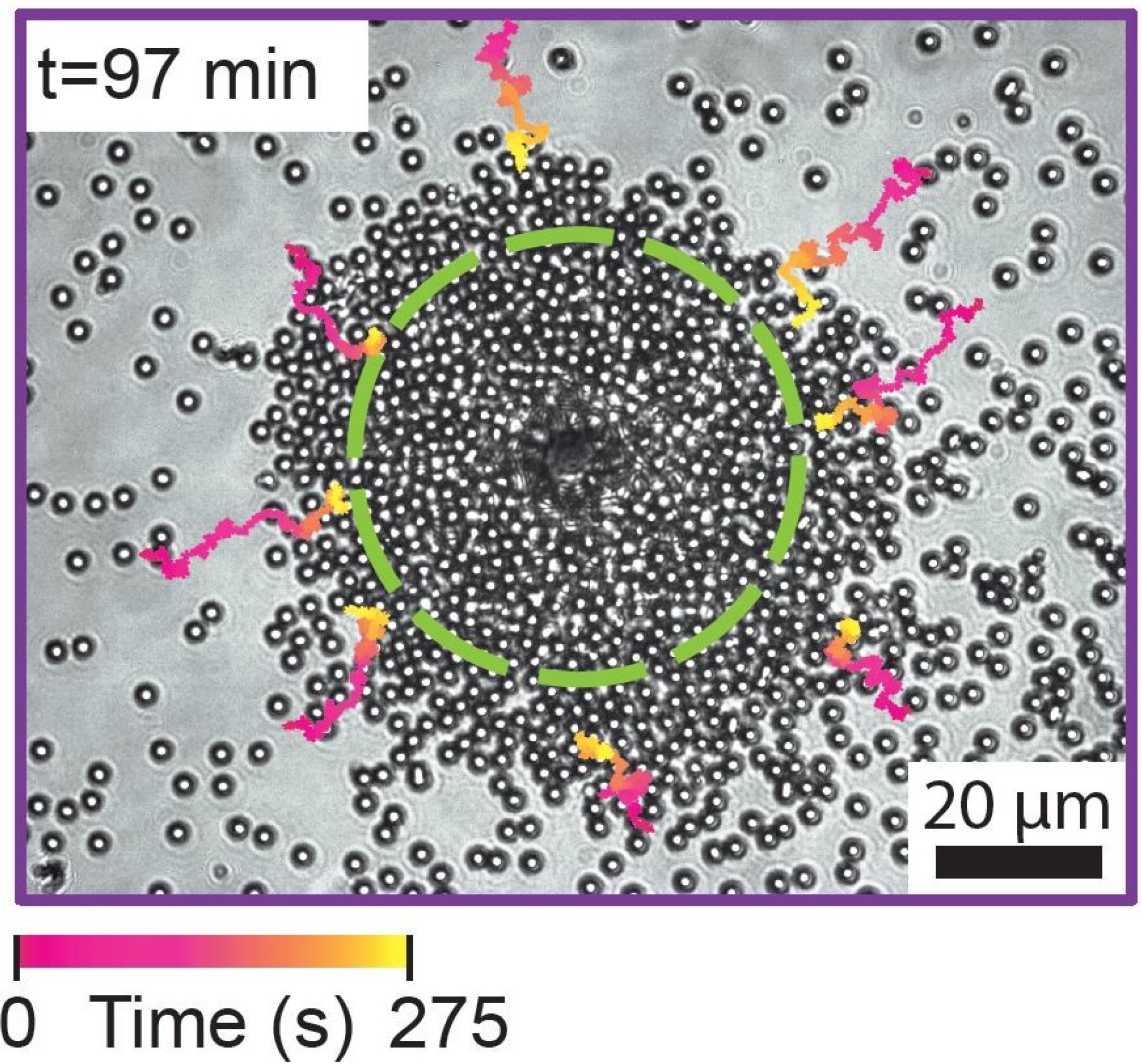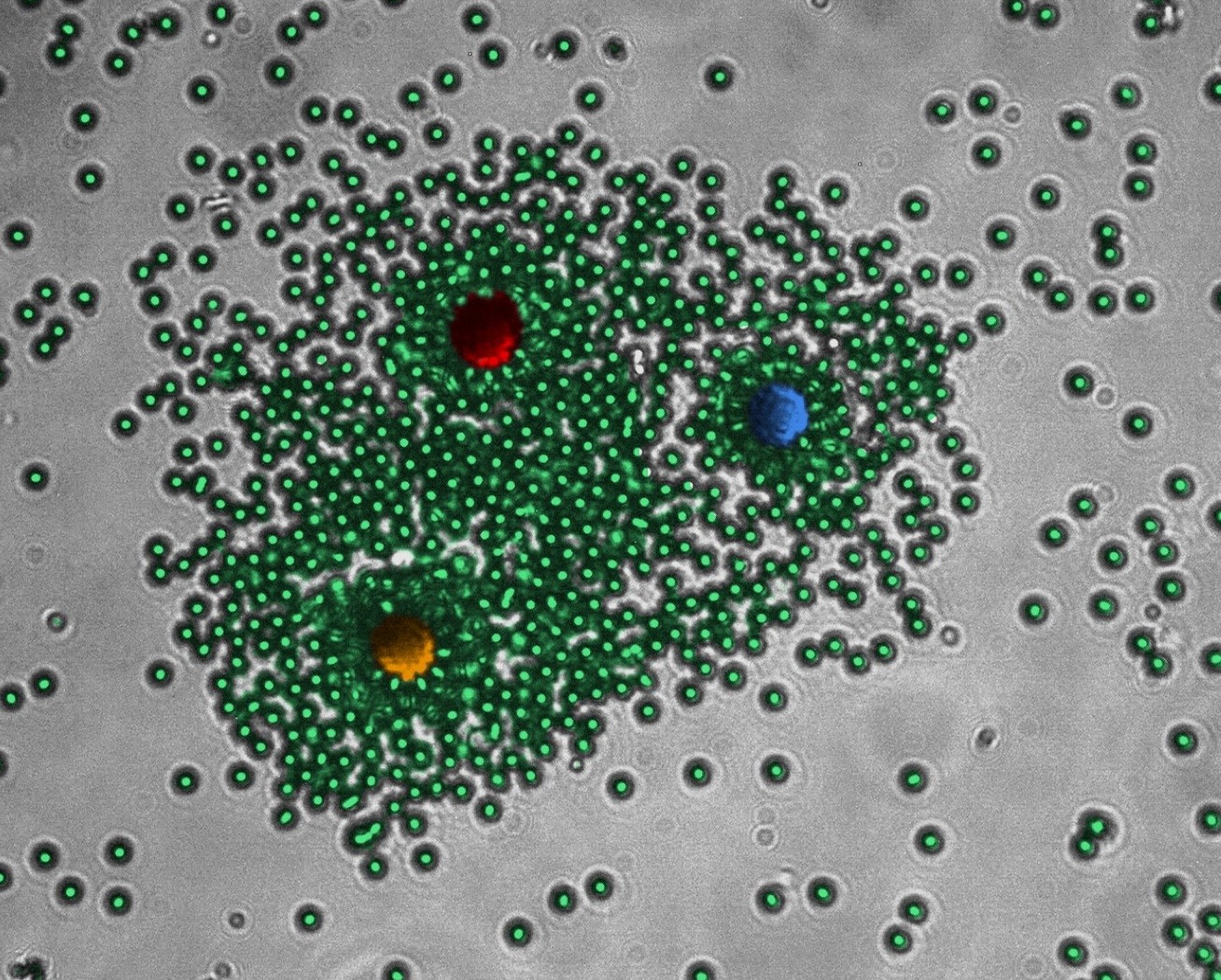‘Life-like’ lasers can self-organise, adapt their structure, and cooperate

By mimicking features of living systems, self-organising lasers could lead to new materials for sensing, computing, light sources and displays.
While many artificial materials have advanced properties, they have a long way to go to combine the versatility and functionality of living materials that can adapt to their situation.
Our laser system can reconfigure and cooperate, thus enabling a first step towards emulating the ever-evolving relationship between structure and functionality typical of living materials. Professor Riccardo Sapienza
For example, in the human body bone and muscle continuously reorganise their structure and composition to better sustain changing weight and level of activity.
Now, researchers from Imperial College London and University College London have demonstrated the first spontaneously self-organising laser device, which can reconfigure when conditions change.
The innovation, reported in Nature Physics, will help enable the development of smart photonic materials capable of better mimicking properties of biological matter, such as responsiveness, adaptation, self-healing, and collective behaviour.
Blending structure and functionality
Co-lead author Professor Riccardo Sapienza, from the Department of Physics at Imperial, said: “Lasers, which power most of our technologies, are designed from crystalline materials to have precise and static properties. We asked ourselves if we could create a laser with the ability to blend structure and functionality, to reconfigure itself and cooperate like biological materials do.
“Our laser system can reconfigure and cooperate, thus enabling a first step towards emulating the ever-evolving relationship between structure and functionality typical of living materials.”

Lasers are devices that amplify light to produce a special form of light. The self-assembling lasers in the team’s experiment consisted of microparticles dispersed in a liquid with high ‘gain’ – the ability to amplify light. Once enough of these microparticles collect together, they can harness external energy to ‘lase’ – produce laser light.
An external laser was used to heat up a ‘Janus’ particle (a particle coated on one side with light-absorbing material), around which the microparticles gathered. The lasing created by these microparticle clusters could be turned on and off by changing the intensity of the external laser, which in turn controlled the size and density of the cluster.
Next-generation materials
The team also showed how the lasing cluster could be transferred in space by heating different Janus particles, demonstrating the adaptability of the system. Janus particles can also collaborate, creating clusters that have properties beyond the simple adding of two clusters, such as changing their shape and boosting their lasing power.

Co-lead author Dr Giorgio Volpe, from the Department of Chemistry at UCL, said: “Nowadays, lasers are used as a matter of course in medicine, telecommunications, and also in industrial production. Embodying lasers with life-like properties will enable the development of robust, autonomous, and durable next-generation materials and devices for sensing applications, non-conventional computing, novel light sources and displays.”
Next, the team will study how to improve the lasers’ autonomous behaviour to render them even more life-like. A first application of the technology could be for next-generation electronic inks for smart displays.
-
‘Self-organized Lasers of Reconfigurable Colloidal Assemblies’ by Manish Trivedi, Dhruv Saxena, Wai Kit Ng, Riccardo Sapienza, and Giorgio Volpe is published in Nature Physics.
Article supporters
Article text (excluding photos or graphics) © Imperial College London.
Photos and graphics subject to third party copyright used with permission or © Imperial College London.
Reporter
Hayley Dunning
Communications Division